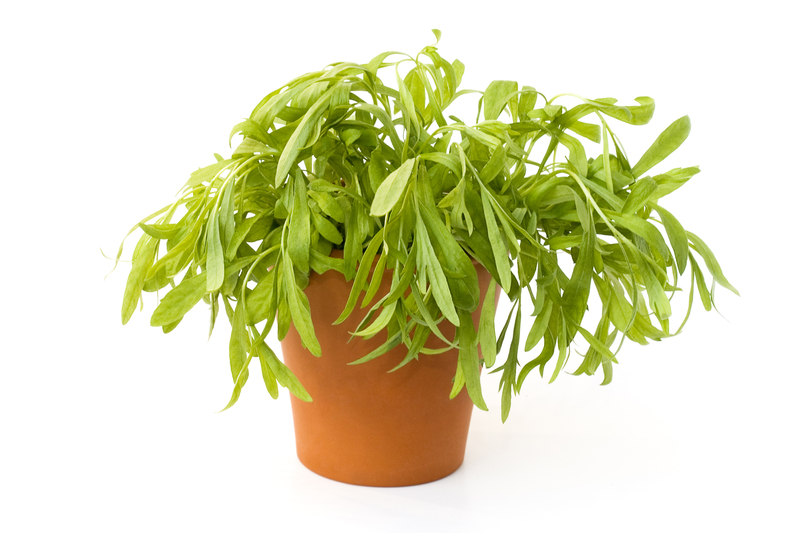Arm Your Garden Against Nature's Tempests
Posted on 23/09/2025
Arm Your Garden Against Nature's Tempests: Complete Guide to Storm-Proof Landscaping
Every gardener loves seeing their hard work flourish under gentle sunshine and nourishing rains. However, nature's tempests--from severe storms and high winds to punishing hail--can turn a lush paradise into a battered landscape in moments. If you want to protect your outdoor oasis and fortify your garden against storm damage, it's time to prepare proactively. This comprehensive guide will help you understand the best defensive strategies, clever landscaping techniques, and emergency tips to arm your garden against nature's tempests all year round.
Why Should You Shield Your Garden from Extreme Weather?
Nature's fury can present itself in many forms: torrential rains, heavy winds, hail, freezing temperatures, and even heatwaves. Each storm presents unique challenges for your landscape, but the consequences can feel the same--uprooted plants, soil erosion, shattered trees, ruined garden beds, and financial loss. Here are compelling reasons to storm-proof your garden:
- Protect Your Investment: Gardeners spend time, money, and heart cultivating their spaces. Storms can quickly undo this effort.
- Preserve Ecosystem Health: A resilient garden sustains local wildlife and supports pollinators, rain or shine.
- Prevent Erosion & Runoff: Strong storms cause soil loss and damage to nearby waterways. Prepared landscaping can minimize these effects.
- Maintain Property Value: A well-kept garden not only pleases the eye but boosts your home's curb appeal.
- Reduce Recovery Time: A storm-ready garden rebounds faster, so you spend less time repairing and replanting.

Understanding the Threats: What Does Nature's Wrath Look Like?
Before you can protect your garden, you must recognize the specific threats that storms bring. Here's a breakdown of the primary hazards:
- High Winds: Can snap branches, uproot shallow-rooted plants, and send debris flying.
- Heavy Rainfall & Floods: May drown plant roots, compact soil, or trigger erosion.
- Hail: Damages leaves, flowers, and tender stems.
- Extreme Heat: Causes drought stress and damages delicate foliage.
- Frost & Cold Snaps: Harm or kill non-hardy vegetation and fruit crops.
The Foundation: Landscape Design for Resilience
The best defense is a good offense--so an armored garden starts with smart, storm-resistant landscaping. Whether you're redesigning your garden or making small upgrades, these strategies will help you create a landscape that weathers any storm.
1. Choose Storm-Resistant Plants
Select plants that are native or well-adapted to your region; they're more likely to handle extremes in weather. Deep-rooted trees and shrubs like oaks or maples resist high winds better, while drought-tolerant species survive dry spells.
- Research regional plant recommendations through your local cooperative extension office.
- Cluster plants by water and sun needs to reduce stress and bolster survival rates during a storm.
- Opt for flexible, wind-tolerant species like ornamental grasses and ground covers.
2. Strategic Plant Placement
Mindfully positioning trees and shrubs can buffer wind, limit damage, and shield tender plants. Consider these placement principles:
- Use windscreens of dense evergreen shrubs or hedges along the prevailing wind edge.
- Space trees properly to avoid overcrowded canopies susceptible to breakage.
- Shelter sensitive beds behind structures, fences, or mature plantings.
3. Design for Drainage
Water management is vital--too much moisture leads to root rot and erosion, while too little spells drought stress. To ensure your landscape endures storms:
- Incorporate sloped beds or swales that guide water away from roots.
- Install rain gardens or bio-retention zones to capture and filter stormwater.
- Use permeable pathways (gravel, pavers) to reduce surface runoff.
- Apply organic mulch thickly to retain moisture and anchor soil.
4. Secure Structures and Supports
Loose garden furniture, freestanding trellises, or decorative items can become dangerous projectiles during storms.
- Tie down or store lightweight items before heavy weather hits.
- Secure trellises and arbors deep into the ground.
- Use sturdy, wind-resistant fencing and sturdy anchors for sheds or greenhouses.
Best Practices for Storm Preparation
Proactive Actions Before a Storm Strikes
Preparedness is the key to minimizing losses. As the forecast warns of incoming tempests, complete these steps:
- Prune dead or weak limbs from trees and shrubs--these break easily in high winds.
- Harvest ripe fruits and vegetables to prevent loss from hail or flooding.
- Stake newly planted or top-heavy plants to reinforce their structure.
- Unplug and secure garden irrigation systems to avoid short circuits.
- Relocate potted plants to sheltered spots, like patios or garages.
- Clear gutters and drains to prevent overflow or waterlogging.
Emergency Tips for Storm Survival
Sometimes, despite all efforts, a particularly vicious storm can catch you off-guard. Enhance your garden's survival odds with these reactive measures:
- Cover delicate plants with row covers, plastic sheeting, or buckets ahead of hail or frost.
- Install windbreaks with burlap or temporary fencing for garden beds in exposed locations.
- Lay sandbags around vulnerable areas if flash flooding is forecast.
The Importance of Soil Health in Storm-Ready Gardens
A garden's most critical line of defense lies beneath the surface. Healthy, well-structured soil absorbs moisture efficiently, provides strong anchorage for roots, and reduces erosion during storms. Invest in your soil to make your landscape storm-resilient:
- Regularly amend your soil with compost and organic matter to improve its texture and fertility.
- Grow cover crops during the off-season to keep soil in place and increase organic content.
- Practice mulching with straw, bark, or shredded leaves to protect exposed soil.
- Implement no-dig or low-till gardening techniques to maintain soil structure.
Erosion Protection Tactics
Erosion is a common aftermath of heavy storms, especially on slopes. To reduce runoff and stabilize your plot:
- Plant ground covers and low, spreading shrubs on hillsides.
- Install terraces, retaining walls, or check dams where needed.
- Redirect downspouts into rain gardens, not onto bare soil.
Maintenance After the Storm: Rapid Recovery Tips
Resilience isn't just about preparation--it's about bouncing back quickly when storms have passed. Here's what to do in your garden immediately after nature's tempest:
- Inspect for damage: Check plants, structures, and soil for obvious injuries.
- Remove broken branches, debris, or fallen leaves gently to avoid hurting regrowth.
- Re-stake or support any leaning plants or trees.
- Hold off on fertilizing or heavy pruning until plants show signs of new growth.
- Replenish mulch and re-seed bare soil to prevent further erosion.
Tips for Salvaging Damaged Plants
Many plants can be saved if cared for promptly:
- Trim away only completely broken or shredded foliage.
- Water gently if soil has dried out, but avoid overwatering waterlogged roots.
- Apply a dilute seaweed or compost tea solution to boost recovery.
- Be patient--some perennials may regrow from roots even if top growth is gone.
Tools and Technologies to Equip Your Garden for Storms
Modern technology offers several ways to further armor your garden against nature's fury. Consider investing in:
- Weather sensors and smart irrigation controllers, which adjust watering schedules based on rainfall and forecast data.
- High-quality plant supports (stakes, cages, netting) for both young saplings and established crops.
- Mobile apps that issue local weather alerts so you can take action with time to spare.
- Geotextiles and erosion control blankets for newly-seeded or sloped areas.

Sustainable, Storm-Proof Gardening Practices
A garden that thrives through the worst tempests is one that works with nature, rather than against it. Embrace these sustainable gardening habits to continuously strengthen your landscape:
- Encourage biodiversity: Mix a variety of plants, including deep-rooted natives, annuals, and perennials for a more adaptable garden.
- Minimize chemical use: Organic gardens recover better and protect beneficial organisms that help maintain plant health.
- Collect rainwater: Install barrels or cisterns to harvest roof runoff for later use during droughts or after storms.
- Compost green waste: Turning storm debris into compost returns nutrients and structure to your soil.
Conclusion: Don't Wait--Arm Your Garden Against Nature's Tempests Today
The unpredictability of weather is an unavoidable reality for every gardener. By proactively strengthening your landscaping, selecting appropriate plants, practicing proper maintenance, and leveraging modern tools, you can arm your garden against nature's tempests and ensure your green haven remains vibrant, beautiful, and resilient through every season. Remember, the most enduring landscapes are not necessarily those untouched by the storm, but those best prepared to withstand and recover from it. Start taking steps today to defend your garden, so you and your landscape can weather any of nature's challenges together.
Additional Resources for Storm-Ready Gardens:
- Consult your local extension office for region-specific plant lists and storm preparation tips.
- Read "The Resilient Gardener" by Carol Deppe for inspiration on gardening through adversity.
- Explore online forums like GardenWeb or r/gardening for personal stories and advice about storm-proofing gardens.
Do you have a storm survival tip or a recovery story? Let us know in the comments below! Together, we can help every gardener weather the storm.



